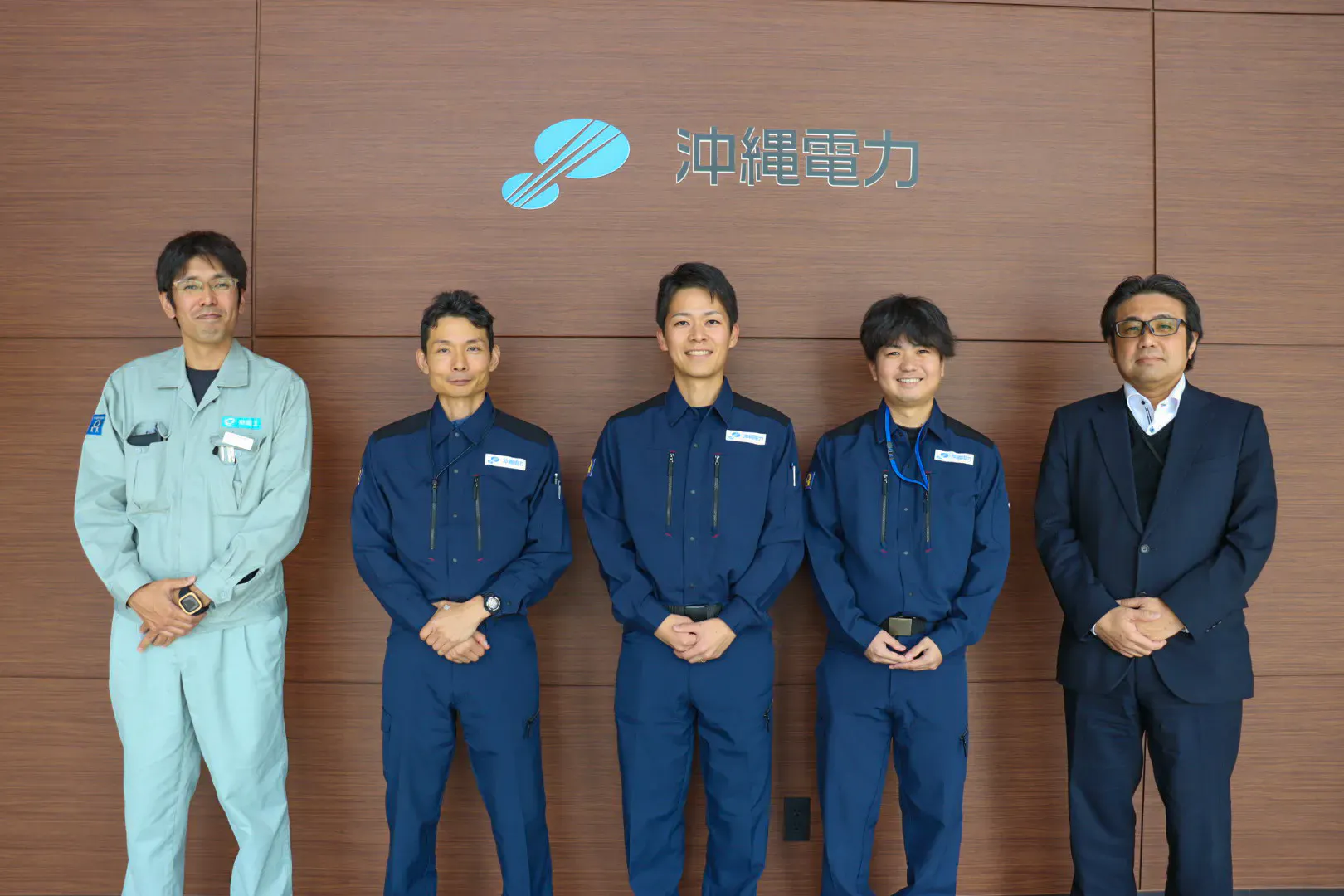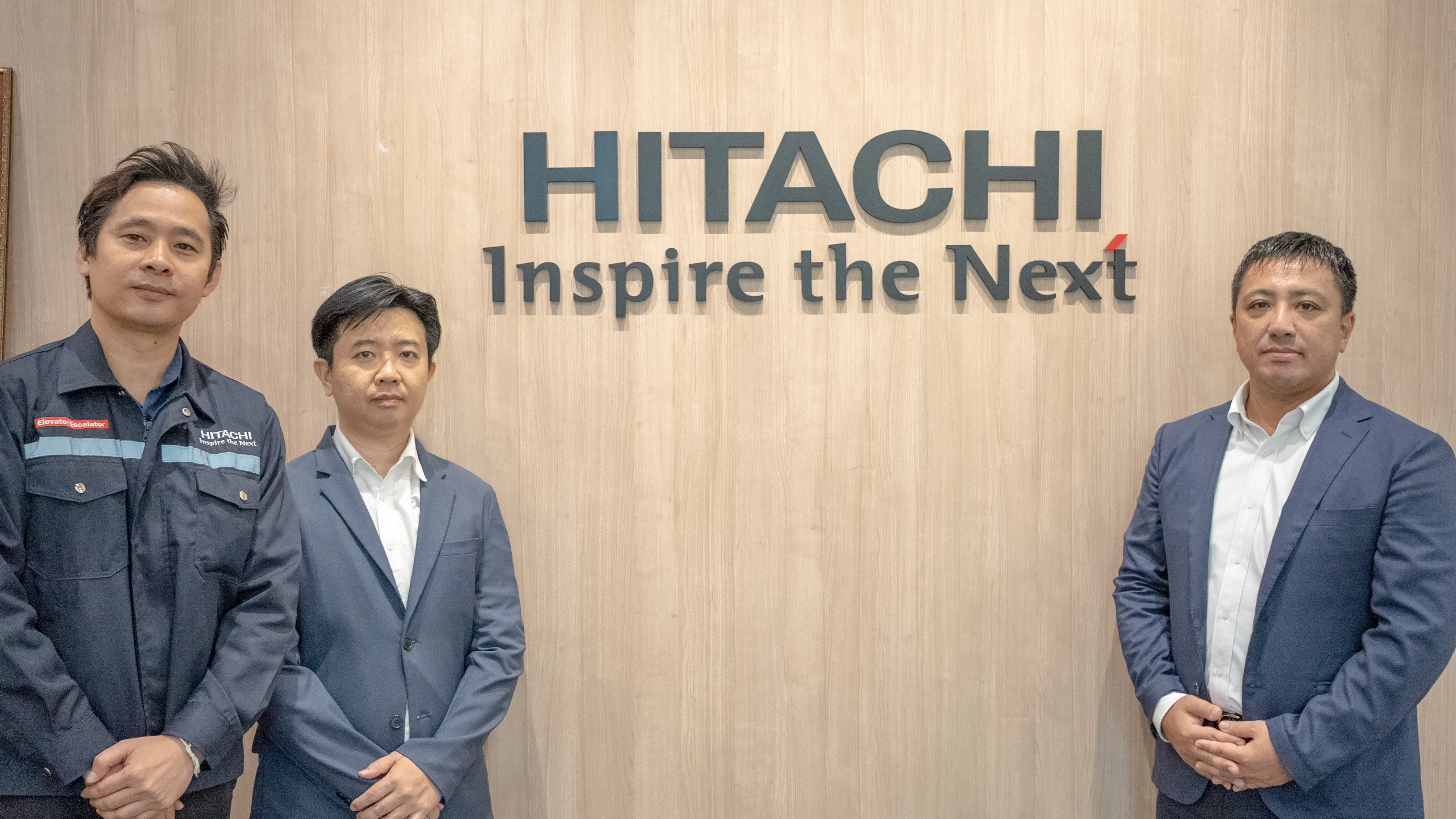Sanix Incorporated
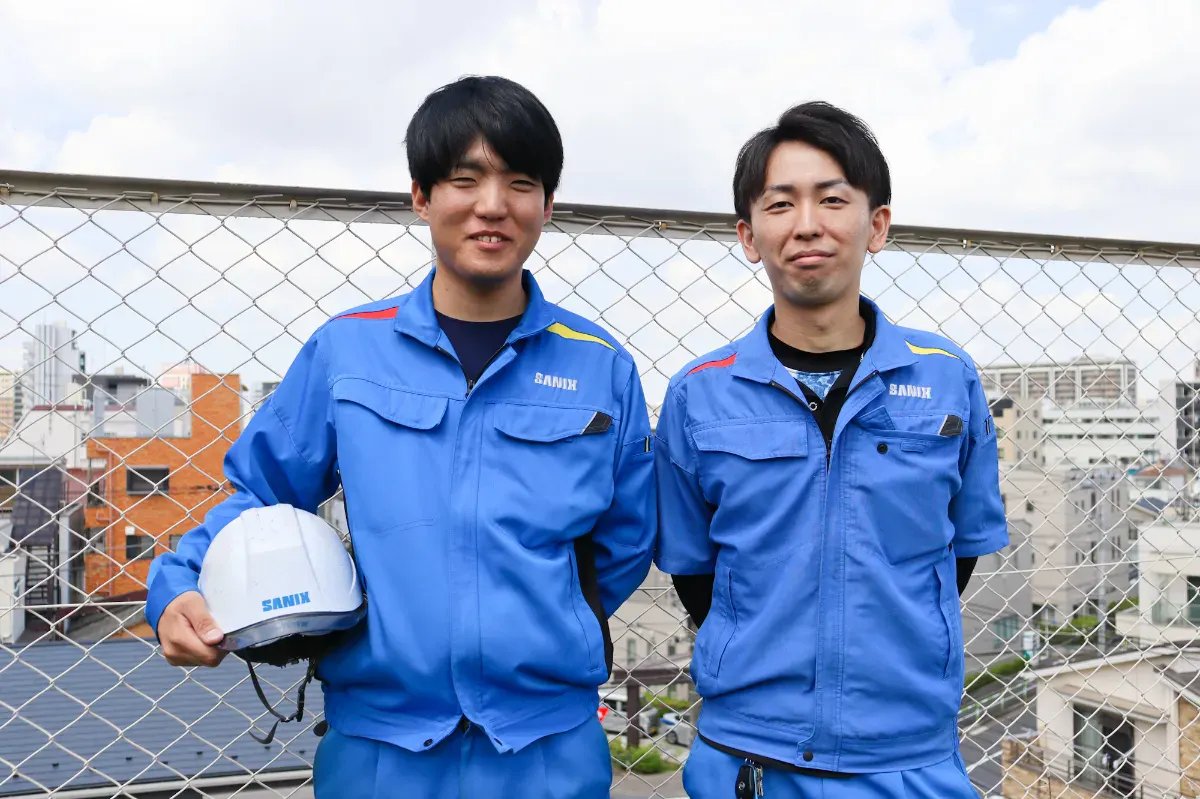

Company Name
Sanix Incorporated
Number of Employees
2,049
Business Activities
Solar power generation, facility construction, electrical construction
Utilization Services
Starting with hygiene management for households, Sanix Incorporated has expanded its business with a focus on the environment, including hygiene management for businesses, industrial waste disposal, power generation using waste plastics as fuel, and the sale and installation of solar power systems. The PV (Photovoltaic) Business Division, which handles all operations related to corporate solar power equipment, has implemented both the KANNA Project and KANNA Report.
As the world increasingly focuses on achieving a sustainable society, the demand for renewable energy, including solar power systems, continues to grow. With the rising number of equipment construction orders, what challenges led to the introduction of KANNA, and what effects has it had? We spoke with Mr. Harada and Mr. Otsuka from the PV Business Division.
Background and Effects of KANNA Implementation
課題
1) Communication methods such as phone calls, emails, and in-person handoffs resulted in wasted time when sharing and confirming information across various locations.
2) The frequency of document updates was high, causing the field team to fall behind on information, leading to miscommunications.
3) Although other kinds of DX (digital transformation) tools had been implemented, their functionalities were not fully utilized, leading to a sense that their effectiveness was low.
導入の決め手
To digitize analog communication methods, eliminate inefficiencies, and ensure smooth, error-free information sharing between the field team and management.
効果・改善
1) The "read" function in the chat eliminated the need for confirmation after sending information, reducing work time by up to two hours.
2) More time was available between document review and the start of construction, allowing for more thorough preparation for the work.
3) Concerns were resolved during the trial period, and the cost-effectiveness of the system was felt even from the consideration stage.
Person interviewed

PV Business Division, Technical Department, Assistant Manager: Mr. Harada
PV Saitama Branch: Mr. Otsuka

As society moves toward a carbon-neutral future, the number of orders related to solar power equipment continues to increase.
— To begin, could you tell us about the business activities of Sanix Incorporated?
Mr. Harada: From equipment maintenance and pest control to waste recycling and energy services, we offer a wide range of services aimed at protecting our customers' daily lives and creating an environment to pass on to the next generation. One of our strengths is the ability to provide consistent services, from sales and installation to O&M (operations and maintenance), as demonstrated by our solar power equipment business, where we’ve implemented KANNA.

Sanix Incorporated, Environmental Resource Development Division, Niigata Plant
Above all, what we value the most is our technical expertise. Since our founding in 1975 we’ve built a strong foundation of extensive construction experience and have actively introduced new technologies. This pioneering spirit is rooted in our high level of technical expertise. To maintain and further enhance it, we have implemented a study support system, as a result, many of our employees hold key certifications in the construction and electrical fields.
— You implemented KANNA in the PV Business Division for solar power equipment. What challenges led to this decision?
Mr. Harada: The challenges were related to communication with our partner companies. Since solar power contributes to CO2 reduction and the achievement of SDGs, government authorities have started actively promoting the introduction of solar equipment, and since 2023, we’ve seen a noticeable increase in companies considering installation. This means a significant increase in the number of orders.
Since then, we’ve focused on construction management while outsourcing the actual construction to trusted partner companies. Previously, we primarily handled construction in-house, so project information, construction details, and important notes were shared thoroughly through daily communication between our employees. However, it’s not easy to smoothly share changing information for each project with all partner companies without any omissions.

At our company, we manage numerous projects throughout the year, each requiring different documents depending on the client. In addition to coordinating with partner companies nationwide, we also need to handle the preparation of various documents. To address the labor hour restrictions that came into effect in April this year—the so-called "2024 Construction Industry Issue*"—we realized that implementing a DX tool like KANNA was necessary.
Reducing the time and effort spent on "phone confirmations" that disrupt both field and management work
— Before implementing KANNA, what communication methods were you using?
Mr. Otsuka: It was primarily email or phone calls. Some partner companies didn’t even have computers, so when we tried to fax documents like blueprints, the text would become unreadable. In those cases, we had to print the documents and hand-deliver them on-site.

Additionally, project information is frequently updated, and every time there’s an update, we need to contact our partner companies. There’s always the risk of missed updates, and any lapse in communication could lead to construction delays and other issues. To prevent this, detailed communication is essential, but since our partner companies are also busy, there’s no guarantee they’ll respond to the emails we send. As a result, we often had to follow up by phone, asking, "Have you checked the changes?"
Frequent communication is crucial to ensure the project progresses smoothly, but this approach was clearly inefficient. Phone calls disrupt work on both sides. One of the main purposes of introducing KANNA was to eliminate this inefficiency and streamline communication with our partner companies.
— With the "2024 Construction Industry Issue" in mind, you decided to implement a DX (digital transformation) tool to streamline communication with partner companies. What led you to specifically choose KANNA for this purpose?
Mr. Harada: The first reason was the presence of the Customer Success Team, which strongly supported our decision to move forward with the implementation. In the past, we had introduced a DX tool from another field, but we couldn’t fully utilize its functions due to operational difficulties, and we struggled to see the cost-effectiveness. Even after the implementation, the tool provider’s support was lacking—we couldn’t fully take advantage of it after the trial phase, and when we asked for help, we didn’t always get the answers we needed, or different people would respond each time.
Given our past experiences, during the initial online meeting to discuss the potential introduction of KANNA, I directly talked about the concerns we had and inquired about the Customer Success Team. We were immediately connected with the person in charge of KANNA, and we were able to clearly express our challenges and worries. From that very first stage, even before we had decided to move forward, they listened attentively to our concerns, which gave me the confidence that "this could work." It wasn’t just about implementing the tool but also the reassurance that they would continue to support us after implementation. That sense of ongoing support was a major deciding factor for us.
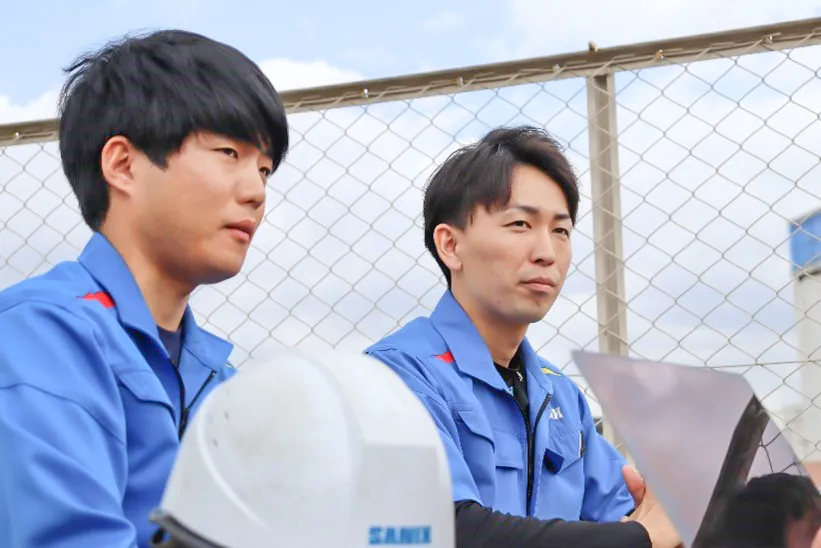
Additionally, KANNA offers unlimited, free account access for partner companies. We compared several other similar tools, but the ability to keep running costs low with KANNA was a key reason for our decision. From a practical standpoint, it’s multifunctional and easy to use, and from a management perspective, we were particularly drawn to the optional KANNA Report feature, which allows you to create custom reports within the app.
As mentioned earlier, the documents required by each client vary. On top of that, with societal changes focusing on safety at the worksite and reducing working hours, the number of required documents is only increasing. While all these documents are important, from a management perspective, we used to have to return to the office to create and print them. With KANNA Report, we expect to streamline back-office operations as well.
The key to tool adoption lies in conveying the benefits to partner companies with a "field perspective"
— After implementing KANNA, what kind of operational system have you adopted?
Mr. Harada: As a trial in preparation for nationwide deployment, we are currently focusing on the Kanto region. Based on our previous experience with introducing a DX tool from another field, we’ve encountered cases where some partner companies, resistant to unfamiliar digital tools, outright say, "We’re not doing that!" To overcome such challenges, the first priority is to create success stories.
To create success stories, it’s important for our partner companies to truly experience the benefits of introducing KANNA. With that in mind, we’re primarily using the document and photo sharing features, along with the chat function, when communicating with field teams. As for the optional KANNA Report, we’re considering its future use at the field level, but for now, our employees are using it to create documents related to O&M (operations and maintenance).
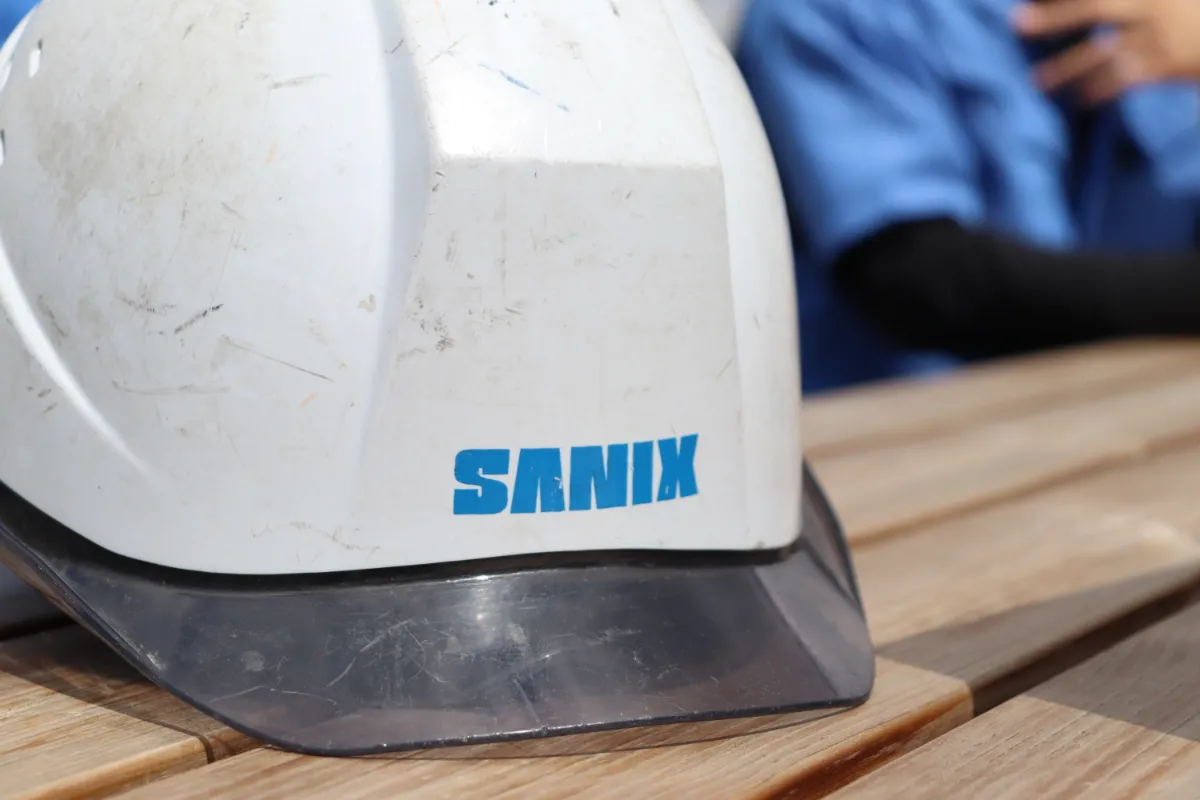
— Creating success stories requires allowing people to experience the benefits. That’s a striking point.
Mr. Harada: Shifting from a familiar method to a new one always comes with some hesitation. Having worked in the field myself in the past, I understand the resistance some may feel toward the introduction of DX tools. However, once the system is in place, it will make things easier for everyone in the field. The frequent phone calls and emails with each update are not only a burden for us on the management side but also for our partner companies.
If communication shifts from phone calls, emails, and sometimes even hand-delivery to KANNA, field teams will be able to check all the information on their smartphones. They will also be able to view the latest documents and blueprints in real time whenever updates occur. This is a benefit for both parties.
Some people may struggle with the operation, but addressing this from the perspective of the field is key. Even for those unfamiliar with DX tools, most are adept at using smartphones, and recently, short video-based social media platforms have become quite popular. Many workers watch short videos during their breaks. That’s why we share operation guides through videos within the company.
No matter how detailed the instruction manuals are, unfortunately, people in the field often don’t take the time to read them. So, we thought about the best way to communicate in a way that fits into their daily routines. Even if it's a video, if it’s too long, they won’t watch it. The key is to share short videos that are "quick and easy to watch on the go," similar to those found on popular short video apps.
Reducing communication tasks by up to two hours a day, allowing the extra time to be used for improving work quality
— With the trial being carried out with a focus on the field perspective, how has it been progressing so far?
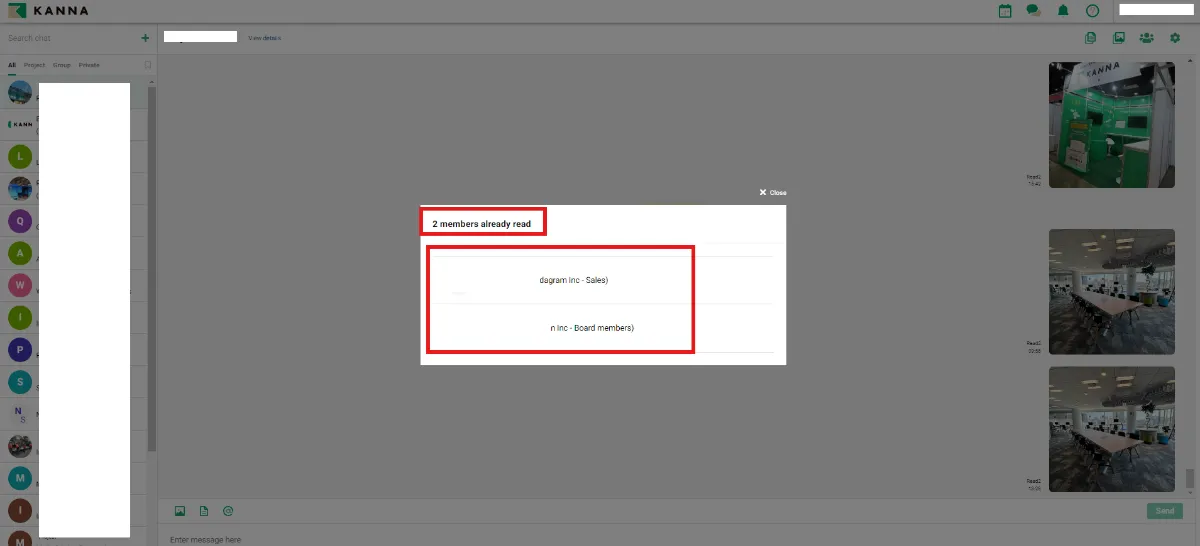
Sanix Incorporated, Environmental Resource Development Division, Niigata Plant
In large construction sites, we sometimes handle the installation of equipment across multiple buildings within a single project. In such cases, even if we as managers are stationed on-site, it can be inefficient to keep track of the status of each building and give directions. Since solar power systems need to be installed at high locations, moving between buildings often requires climbing up and down scaffolding or ladders, which takes considerable time.
In such situations, KANNA proves to be highly effective. By asking via chat, "Please share the progress with images," we can understand the situation through photos without having to move between buildings ourselves. Of course, we still conduct a final inspection in person, but we can gather a lot of information from the photos and give appropriate directions more efficiently. This is particularly crucial in the case of construction at government facilities, where strict deadlines mean that saving even small amounts of time can significantly impact overall work efficiency.
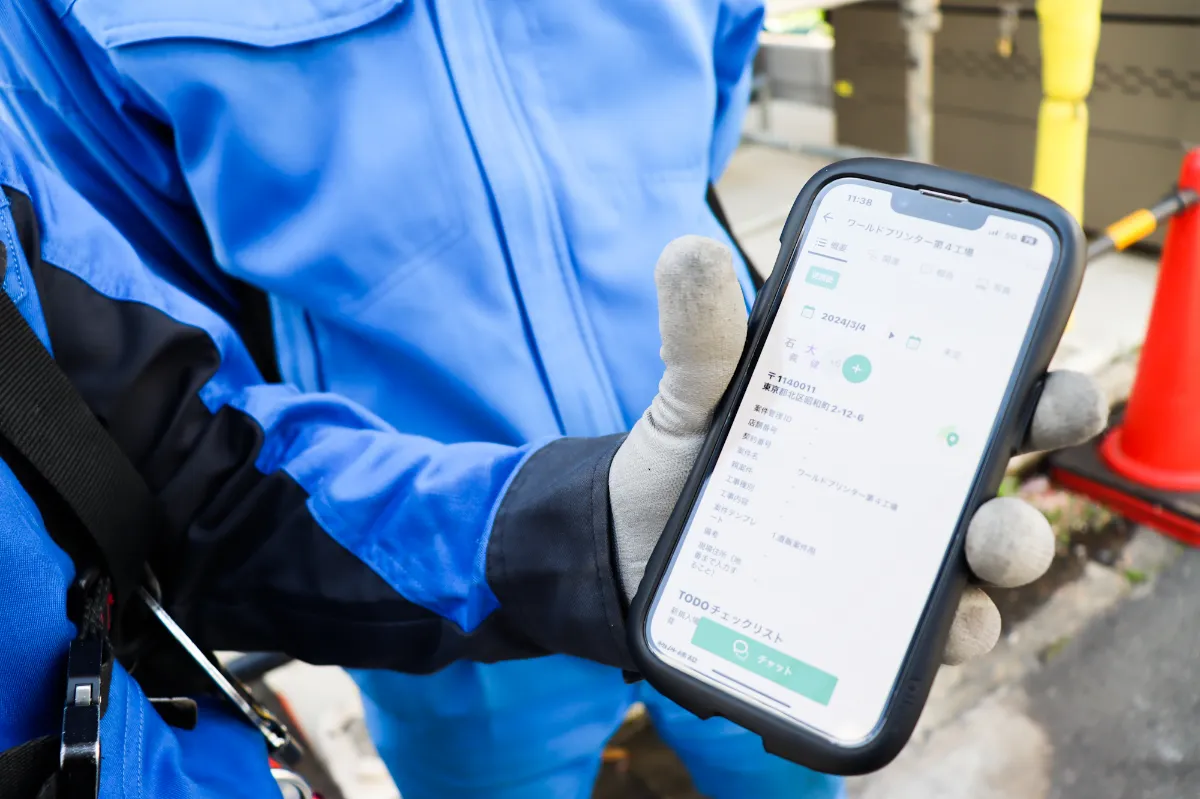
This is just my personal perspective, but with the reduction in phone calls and the ability to remotely confirm and give instructions through images, I feel like my working hours have been shortened by up to two hours. Information sharing after the on-site work is also done through KANNA, so it feels like I’m able to do the work of 1.5 people on my own.
— You’re able to do the work of 1.5 people, and as a result, you’ve shortened your working hours by up to two hours. That’s a significant change.
Mr. Otsuka: Not only that, but I also feel that the introduction of KANNA has helped improve the precision of the work on-site. After receiving a project order, we select a partner company, and once a company is chosen, we hand over the necessary documents. This was the typical flow before starting construction, but previously, handing over the documents was time-consuming. Now, we simply invite the selected partner company to KANNA and upload the documents that we had been preparing in parallel with the contractor selection.
The handover process is now completed through KANNA, which reduces both time and effort, but that’s not all. From the perspective of our partner companies, they can review the documents immediately after the job is confirmed. If any documents are updated before the actual construction begins, they can quickly recognize and respond to the changes. This makes it easier for them to visualize the site and allows them to dedicate more time to preparation than before.

Before introducing KANNA, we primarily communicated with the president or lead foreman of the partner companies, but they weren’t always directly involved in on-site work. As a result, there were often instances where the information we had shared in advance didn’t reach the on-site workers. Now, with KANNA, everyone who has an account, including all relevant parties, can access the shared information, eliminating the "telephone game" effect. This is beneficial not only for us on the management side but also for our partner companies.
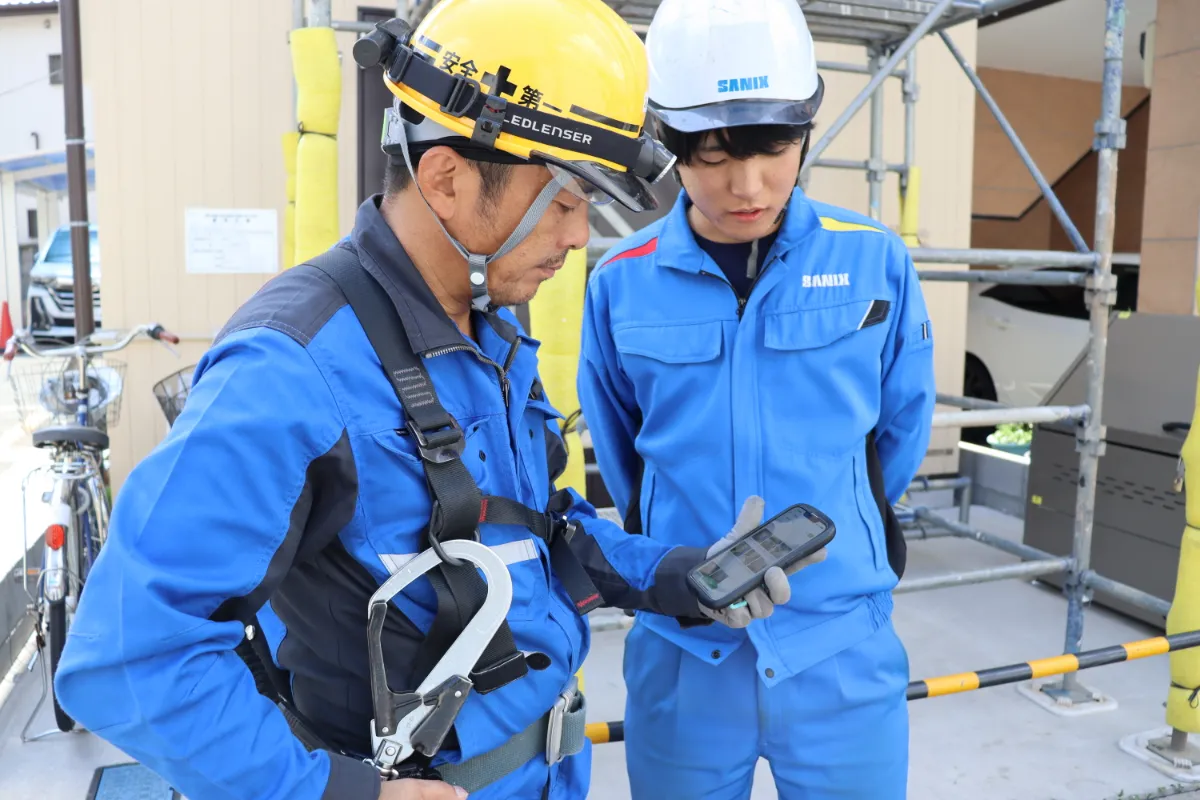
Mr. Fujisaki, a craftsman who checks his work using KANNA, and Otsuka-san, who participated in the interview. Mr. Fujisaki says, "We're not great with digital stuff, but this app isn't complicated, so we can use it just fine. As long as we have our smartphones, we can check everything we need."
In the past, there were instances where the information we conveyed didn’t reach the field. In those cases, we had to explain the same thing again, and sometimes even redo parts of the work. These inefficiencies take away valuable time from the field. Installing solar power systems often involves power outages, and minimizing downtime is a critical part of the job. Since we work in a time-sensitive industry, eliminating inefficiencies with KANNA is something that our partner companies are likely experiencing as well.
Generating company profits while digitally accumulating field information for decades to come
— Your industry is time-sensitive, and starting in April 2024, overtime labor restrictions will be enforced. Further efficiency improvements are expected. Lastly, could you share your company’s outlook?
Mr. Harada: As I mentioned, we are already seeing the positive effects of implementing KANNA during the trial phase. Beyond the so-called "2024 Construction Industry Issue", the ongoing labor shortage across the entire sector has also impacted us. This is why DX tools like KANNA are crucial in providing significant support to our operations.
The installation of solar power equipment is outdoor work. Because of this, blueprints can get wet from sudden rain or blown away by the wind, and we often receive requests from partner companies to reissue them. Each time this happens, we would have to return to the office, print the blueprints, and bring them back to the site. Many of the sites are in mountainous or remote areas where transportation is inconvenient, and the office with the printer is often far away. With KANNA, which allows document sharing via the cloud, we can reduce the time and effort spent on such tasks, promote paperless operations, and even save on gasoline costs.
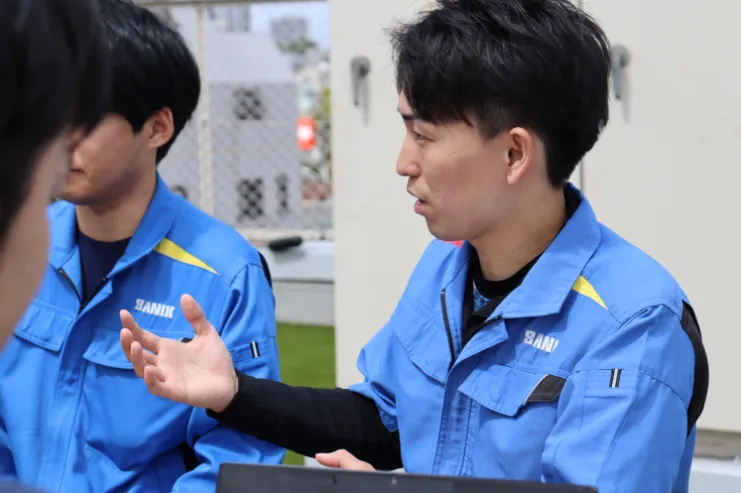
With the goal of reducing such time and costs, our immediate priority is to promote KANNA among the employees of the PV Technical Department. As a manager, I frequently visit sites across the country, and each time, I inform them that "we recently introduced this tool." However, to push it through the internal approval process, we also need to quantify its effectiveness. This can be quite challenging, but the KANNA representatives are very supportive, offering advice on how to create such data.
The lifespan of solar power equipment is approximately 30 years. Since these systems require long-term, stable operation, regular maintenance is crucial. Currently, we are using KANNA for the workflow from the start of construction to completion, but we are also considering managing everything with KANNA, from site surveys to post-completion maintenance.
If we achieve this, KANNA will become like a medical record for the equipment. Even 30 years after installation, by looking back at KANNA, we will be able to thoroughly understand not only the project details but also the progress of the equipment. This will allow us to maintain consistent quality, even with generational shifts in the workforce, contributing to our future.
*2024 Construction Industry Issue
In Japan, the construction industry has been facing a labor shortage. As a result, the long overtime work became a common trait of the industry. To tackle this and secure a better working environment for laborers in the industry, the Japanese government decided to set a regulation that limits overtime working hours for the construction industry, which is set to be in effect in April 2024. A violation of this regulation can result in a punishment. Hence, improving efficiency and reducing the working hours are the urgent matters that the construction companies have to resolve.
Company Name: Sanix Incorporated
Business Overview: Solar power generation, facility construction, electrical construction
Established: September 1978
Number of Employees: 2,049 (as of March 31, 2024, consolidated)
Website: https://sanix.jp/
Article published on: August 21, 2025
